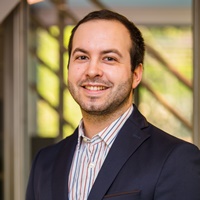Step-change improvements
We started setting clear goals: creating a long-term vision across PIVO-schools and designing a strategy capable of achieving step-change improvements. Our delivery was structured around four key pillars:
-
Know your customer
Understanding the different customers, whether it’s a lecturer, student or external organisation, was a crucial step in the very beginning of the project. First, we wrote specific persona’s, mapped out the different customer journeys and used NPS scoring. This gave us enough information to map out critical touchpoints and develop a better understanding of the service PIVO should provide.
-
Attention to details
Understanding the whole system, requires knowledge of every little detail. So, we used macro process mapping as a basis to build a holistic view of the ‘operational machine’ of the PIVO learning centre. This led us to pinpoint the impact of the current operations on the organisational structure. Additionally, it enabled us to capture the impact of these processes on the existing application architecture as well as the requirements needed to create a new learning and development system.
-
Get everybody involved
Having early project acknowledgement and acceptance is always highly appreciated. Co-creation was a major focal point throughout the whole project. We organised information sessions and company-wide workshops to build consensus on the future IT strategy.
-
Research
We wanted PIVO to have the right tools to ease into their new organisational structure. Extensive market research and exploration revealed a list of different software providers, tools and applications. It led to a shortlist of essential criteria enabling us to evaluate which of these would fit the organisational ambitions.
Finally, output from all these previous tracks were put together to build various future scenarios for PIVO. We set up an organisation-wide workshop, using gamification as a lever. It enabled us to visualise common goals, build consensus bottom-up, choose the right scenario and identify the critical success factors to execute the transformation.
Graduation
The project turned in some good results:
- PIVO has a clear sense of business direction and organisation-wide understanding on how to reach common goals as well as the impact they have on current processes and structures.
- A thorough IT strategy plan supporting those business goals as well as providing PIVO with a high-level understanding of the necessary requirements for the future learning and development tooling.
- PIVO can focus on continuous improvement with an early-on mindset change to embrace the small day-to-day improvements and breakthroughs across the different entities.
Forever a student
Any organisational culture that continuously strives for perfection, can reinvent itself and is capable of embracing change. With the help of Möbius, PIVO will now be able to handle the effects of technology, even with significant impact on its established structures.
Transformation led by technology is best seen as a continuous process and not necessarily a one-off. That’s why complex organisational change requires constant attention. Today’s technology might not be tomorrow’s. Reaching clarity in vision and direction, simplicity in strategy and determinism in execution are key features in facilitating that process.
Is your organisation ready to face the future?










